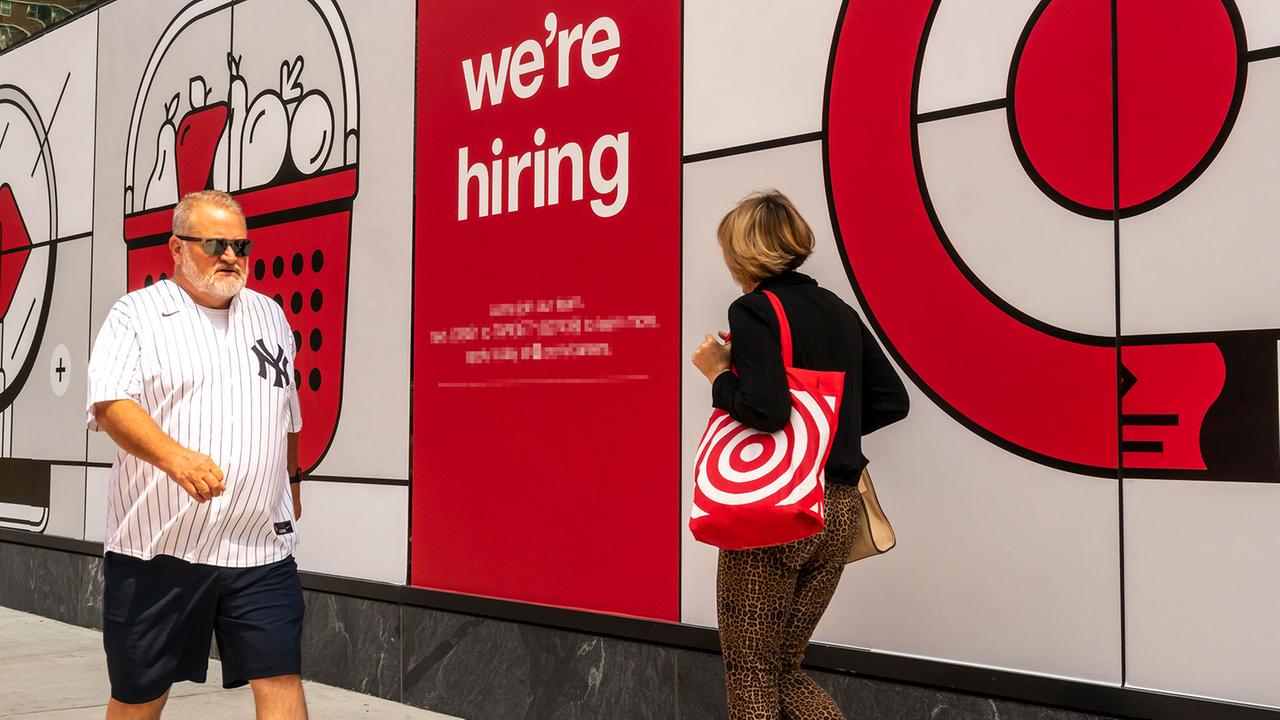In the USA, shortly before the presidential election, there are signs of weakness in the labor market: only 12,000 new jobs were added in October. This was also due to Hurricane Milton and the strike at Boeing.
Shortly before the duel between Kamala Harris and Donald Trump for the White House, the situation on the US labor market deteriorated due to the consequences of tropical cyclones and a strike. While the unemployment rate remained at 4.1 percent in October, significantly fewer new jobs were created, the United States Department of Labor said today. Compared to the previous month, there were only 12,000 new jobs.
According to revised data, 223,000 new jobs were created in September. The increase in employment in the largest economy in September and August was also revised significantly downwards, by a total of 112,000 jobs.
Distortions caused by hurricane…
In October, the consequences of Hurricane Milton affected parts of the USA. Thousands of people had to leave their homes in the state of Florida in the first half of October. “'Milton' is comparable to Hurricane 'Irma' in September 2017. At that time, monthly job creation was more than 100,000 lower due to the hurricane,” explained Thomas Gitzel, chief economist at VP Bank. This shows how much hurricanes affect employment.
Ultimately, one will have to wait for the labor market reports for November and December in order to be able to assess the true situation on the labor market, says Commerzbank economist Christoph Balz: The US labor market was virtually “disheveled by a hurricane” in October.
…and strike at Boeing
Added to this are the ongoing strike measures at the aircraft manufacturer Boeing. The approximately 33,000 unionized employees have been on strike because of collective bargaining since mid-September.
According to DekaBank's assessment, the significance of the labor market report is less than usual due to these distortions. If the special effects are taken into account, job creation will continue to be robust, Gitzel also said. This is reflected in the separately determined unemployment rate and in the better-than-expected wage development. On a monthly basis, wages rose by 0.4 percent in October.
What is the Fed doing?
The labor market data is considered to be crucial for the monetary policy of the US Federal Reserve, which will decide on the key interest rate again next Thursday. The job data is likely to cause some headaches for the monetary authorities. Even though the bottom line was that jobs were still being created, the increase in October was 12,000, well below the 100,000 mark. A monthly increase of this amount is considered necessary to provide jobs for the growing US population of working age.
The Fed completed the interest rate turnaround in September and could now do more – just two days after the presidential election. In contrast to the recent XL interest rate move, many experts believe that the reduction will now be one size smaller: “The Fed will reduce its key interest rates by 25 basis points. That is, to a certain extent, set in stone,” says expert Gitzel. The key interest rate band is currently 4.75 to 5.0 percent, well above the current inflation rate, so that there is scope for monetary policy easing regardless of developments in the labor market.
Inflation is falling
Price inflation in the USA has now fallen almost to the central bank's target of two percent before the presidential election. At 2.1 percent, the annual rate of the so-called PCE index was only slightly higher in September. In August it was still 2.3 percent. The indicator, released yesterday in Washington, shows the price movement of a fixed basket of goods tailored to Americans' personal spending. Consumer prices (CPI) also only increased by 2.4 percent in September, after 2.5 percent in August.
As inflation declines, the financial markets are firmly expecting the Fed to loosen the reins in December and to follow up with further interest rate cuts next year.
Better consumer mood again
At the same time, the easing price pressure is also ensuring that US citizens are becoming more willing to spend again. Their consumption increased by 0.5 percent in September compared to the previous month, as the Ministry of Commerce announced. Economists polled by Reuters had expected just 0.4 percent, after a revised 0.3 percent increase in August.
Private consumption is considered the driving force of the US economy, which has recently continued to run smoothly. Gross domestic product (GDP) rose by an annualized 2.8 percent in the third quarter, almost as fast as in the spring when it rose by 3.0 percent. “In anticipation of further key interest rate cuts, consumers' willingness to make larger purchases is increasing again. Plans to purchase real estate are likely to mature soon,” said economist Bastian Hepperle from Hauck Aufhäuser Lamp Privatbank.




